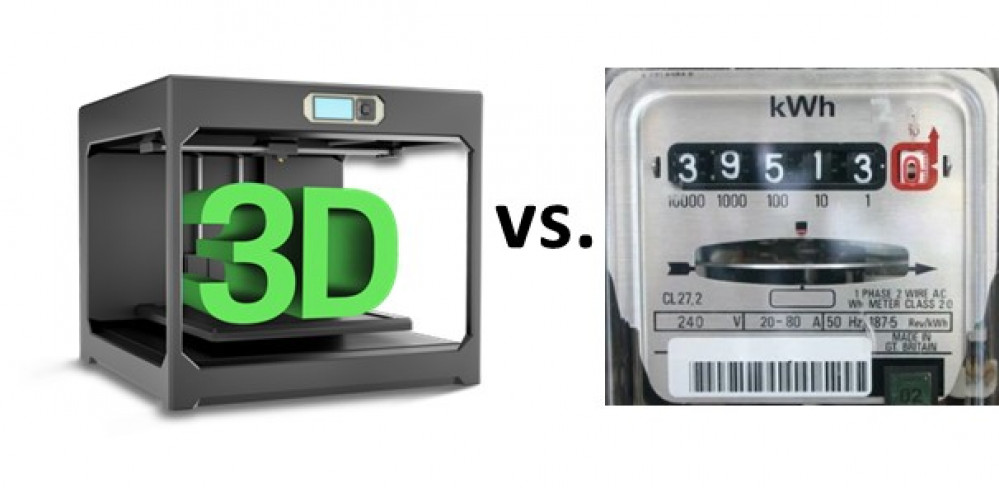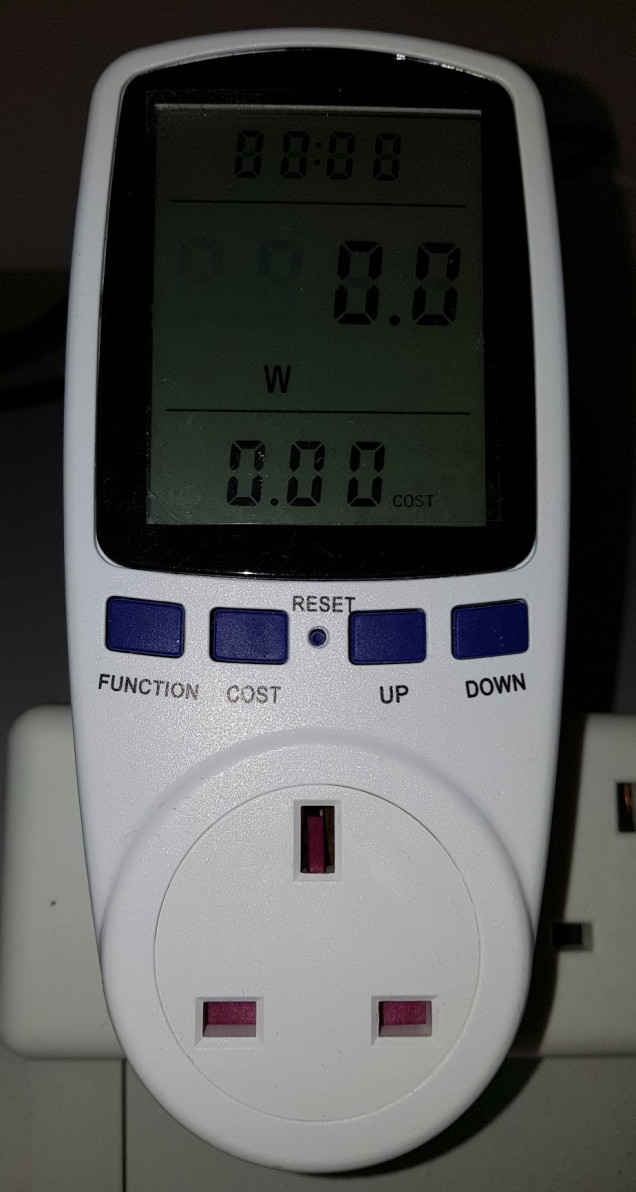
What’s the cost of a 3D print?
Getting to the nitty gritty
Now what I covered previously was all well and good, but printers don’t run on free electricity (at least, not here in Casa del Spanky anyway), so how do you work out the amount and cost of that used electricity?
There are two ways that I know of and have used:
- The easy, but costs money way – Use a power meter
- The slightly harder, but free way – Do math (or rather, do a bit of reading/Google-Fu and then find a calculator to do the hard thinking for you!)
Option 1 – The Power Meter
These handy devices are available from many sources, I got mine (a YOUTHINK Power Meter) via Amazon – link here , but there are many others available. NOTE: When using Amazon, please remember to use the affiliate link of whatever your favourite YouTuber is first, just to throw them a little love. After all, it doesn’t cost you any extra and every little bit helps them out.
You’ll also need to know what your electricity cost(s) are. This will be shown on your power/electricity bill as a ‘kilowatt per hour rate’ (kWh). For me, it was 16.487p/kWh (roughly £0.16), but obviously, yours will vary according to your supplier and tariff.
Plug the power meter in – ideally to an extension strip so you can read it without having to lie on the floor. Your knees will thank you later. Trust me, I know – I’m old. Now follow the instruction manual for setting it up (this took less than 30 seconds on mine) and then plug your printer into it. Don’t turn the printer on just yet. First make sure you have your file sliced, inserted into your printer via whatever media and ready to go.
All set? Good. Record what is on the Power Usage display of the power meter (this is your START VALUE). Turn on the printer and tell it to start printing. You’ll see the power usage increase quite quickly as the printer warms up, turns on any fans and begins to heat the nozzle (and heated bed if you have one). You might want to make a note of the Power Usage display again as soon as the printer begins to print, just for completeness (call this PRINT VALUE).
Let it the file print. Ideally, you’re either printing something small/fast, or else you remembered how long the slicer estimated it would take to print and come back in time to watch it finish. Record the Power Usage display again just as it finishes (call this the FINISH VALUE). You now have enough data to work out your power use cost.
Take the power usage number you wrote as the printer powered up (your START VALUE). Subtract that from the value you wrote down when your print had finished (your FINISH VALUE) – this gives us the POWER USED. Now, multiply your kWh rate by the POWER USED – that should give you your monetary cost for the print.
Option 2 – Do Math
Every electrical device has a power rating. These are usually displayed on a label somewhere on the item and are normally rated in watts/wattage (W). This isn’t an exact thing to do without a power meter, so you’ll just have to do what I did before I bought mine – Google it!
For example, the average power draw of my Ender 3 is 125 Watts, or 0.125kWh, when printing at 200°C and with the bed set to 60°C, and a maximum consumption of 277 Watts when it’s heating up.
To calculate exactly how much it’s going to cost you to run an Ender 3 with those standard PLA printing temperatures, multiply the cost of the kWh that your power company is charging you (£0.16487 in my case) by your printer kWh rate (0.125kWh for an Ender 3) and you’ll know the cost of it printing per hour (£0.02060875, or roughly 2 pence). Remarkably similar numbers to what I got when using the power meter on my Creality CR6-SE.
Note: This is the full electrical cost of the print, as the start-up/heating up process is also technically part of producing the finished result. If you only want the cost of what it took to just print the file, then replace the START VALUE with the one you wrote just as the model began to print (the PRINT VALUE) and do the math above, e.g. [PRINT VALUE – FINISH VALUE = POWER USED]
Some power meters have buttons/functions that allow the soft storage of readings that can speed up this process.































![TerrainFest 2024 Begins! Build Terrain With OnTableTop & Win A £300 Prize! [Extended!]](https://images.beastsofwar.com/2024/10/TerrainFEST-2024-Social-Media-Post-Square-225-127.jpg)











































Leave a Reply